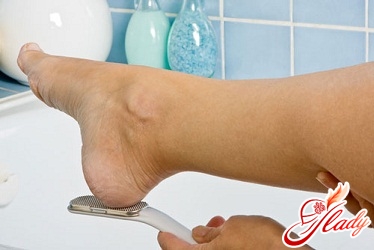 And who came up with this painful procedure?hair removal? Who and at what point decided where on a girl's body hair was "necessary" and where it was "unnecessary"?! Surely men did this out of revenge for having to shave every day. For some reason, they consider this procedure to be the height of torture (they should have tried to remove hair on their legs or armpits with wax at least once). And we, girls, have to do this depilation... That is, epilation... Even here there is a problem: these two concepts are always confused! Let's figure out how epilation differs from depilation, or maybe they are the same thing?
And who came up with this painful procedure?hair removal? Who and at what point decided where on a girl's body hair was "necessary" and where it was "unnecessary"?! Surely men did this out of revenge for having to shave every day. For some reason, they consider this procedure to be the height of torture (they should have tried to remove hair on their legs or armpits with wax at least once). And we, girls, have to do this depilation... That is, epilation... Even here there is a problem: these two concepts are always confused! Let's figure out how epilation differs from depilation, or maybe they are the same thing?
What distinguishes epilation from depilation
It would seem that “epilation” and “depilation” areare quite close in meaning. They both mean removing unwanted hair from the body. But there is a difference between them. The main difference between epilation and depilation is that depilation removes the visible part of the hair and the hair follicle continues to live, while epilation destroys the hair root. Simply put, depilation is temporary, while epilation is forever. If you go for epilation, you get rid of excess hair on your body forever. If you prefer depilation, you shave with a razor, use wax strips or special creams, and repeat the procedure every few days. Wait a minute, why then is the word “epilation” used to refer to almost all of the above procedures? Go to any electrical appliance store, and next to hair dryers and irons you will see a whole shelf of electric “epilators”! But they don’t get rid of hair forever, so they are not e-, but depilators? And such familiar expressions as "wax epilation", "sugar epilation" - are also incorrect? Alas, it is. In fact, what is sold in the store on the shelf with household appliances is an electric vibratory epilator, and not at all "Electric epilator", as it is written on the price tag. And most beauty salons offer depilation services for various areas of your body. Why is everything mixed up? Now it is difficult to say when the fashionable word "epilation" appeared on the lips of literally all the girls in our country. After all, its main meaning was that extra hairs can be removed, and whether it is permanent or not is of secondary importance. This is similar to the history of the famous word "photocopy", when most copying machines had nothing to do with the Xerox trademark. But ads with the word "Photocopy" are still hanging on every corner, and no one is embarrassed. The same goes for hair removal: a foreign word entered common usage, but no one was particularly interested in the difference between epilation and depilation. Moreover, few beauty salon specialists can even today clearly explain the difference between them. “Is there life on Mars, is there no life on Mars… What’s the difference?” The main thing is that the client leaves satisfied. That’s why the confusion still exists.
History of Hair Removal
Be that as it may, but depilation originated intime immemorial. Ancient Egyptian women shaved off excess hair with sharp objects - similar to a modern razor. In Ancient Rome, they removed unwanted hair from the body by twisting the hairs on a strong thread and plucking them out with a sharp movement. Does this remind you of anything? And how do you think modern electric depilatories work? The good old method of ancient Roman beauties still works: a rotating mechanism sharply plucks hairs from your body. Cleopatra and Nefertiti were the first to think of applying a mask of honey, wax and herbal infusions to the body to remove excess hair from the body (this is how sugaring appeared!). Beauties did not disdain tweezers, forcing unfortunate servants to spend hours plucking out "divine hairs". Wax strips and analogs of depilatory creams were invented in the East shortly before the 14th century AD. Beauties in harems had plenty of time to come up with a way to make their bodies absolutely smooth and attractive. What wouldn't you do for the chance to attract a single man when there were hundreds of pretty rivals around! As you can see, little has changed in the depilation procedure over the course of hundreds of years. And this is not surprising: what new can you come up with for the temporary removal of unwanted hair? On the other hand, technical progress has not left this delicate problem aside - there is a great opportunity not only to shave off hair, but also to completely get rid of the problem of excess hair on the body. The age of epilation has arrived! Oddly enough, epilation could have appeared as early as 1896. Then a certain German doctor named Freund proposed an ideal solution to the problem: in just a few absolutely painless sessions, get rid of unwanted hair forever! The thing is that it was at that time that X-rays were discovered. But there were no queues of people wanting to irradiate themselves to the waist, and so the “brilliant idea” was wasted. At the end of the 19th century, the first experiments with electrolysis began, this method was perfected almost throughout the last century. Many modern young ladies still use it. The point of electrolysis is that a thin needle-electrode is inserted into the hair follicle, shocks and destroys the hair root. You understand how painful this procedure is. Moreover, it is done in several stages, and the marks from the “injections” may not heal for up to two months! At the end of the 20th century, we were pleased with laser hair removal - the procedure, although painful, is more effective. Its main problem is that the “killing” of the hair roots of one zone lasts 5-6 hours, and is simply not suitable for owners of dark skin or light hair on the body. And although this type of hair removal is now widely advertised, it has been replaced by another, more powerful system: photoepilation. This is a fairly quick procedure, suitable for both blondes and brunettes, but it has not been possible to get rid of the pain factor. They say that enzyme hair removal is becoming fashionable in Europe…. They say that it is almost painless!
Epilation and depilation: what to choose
As you can see, there are many waysepilation, and everyone promises to remove hair forever. However, do not be fooled - in order to achieve absolutely smooth skin forever, you will need to undergo procedures many times. The fact that you visit a cosmetologist and have a fashionable epilation does not mean immediate destruction of the hair follicle and the cessation of hair growth. Any epilation requires courage, patience and a lot of money. And for some people, such procedures are generally contraindicated for health reasons. Of course, there is a difference between epilation and depilation, and a big one. But it is rather theoretical. But in almost both cases, getting rid of excess hair in just one session and for life is still impossible. Indeed, after epilation, hair grows thinner and more sparsely - but these are already details. So it is up to you to decide whether to be cool about creams and wax and save money for epilation, or to make do with grandma's remedies. Here it all depends on the character: for someone, shaving their legs and brushing their teeth in the morning is a habitual, easy ritual. And someone is ready to experience pain several times in order not to face this problem again. We recommend reading:









